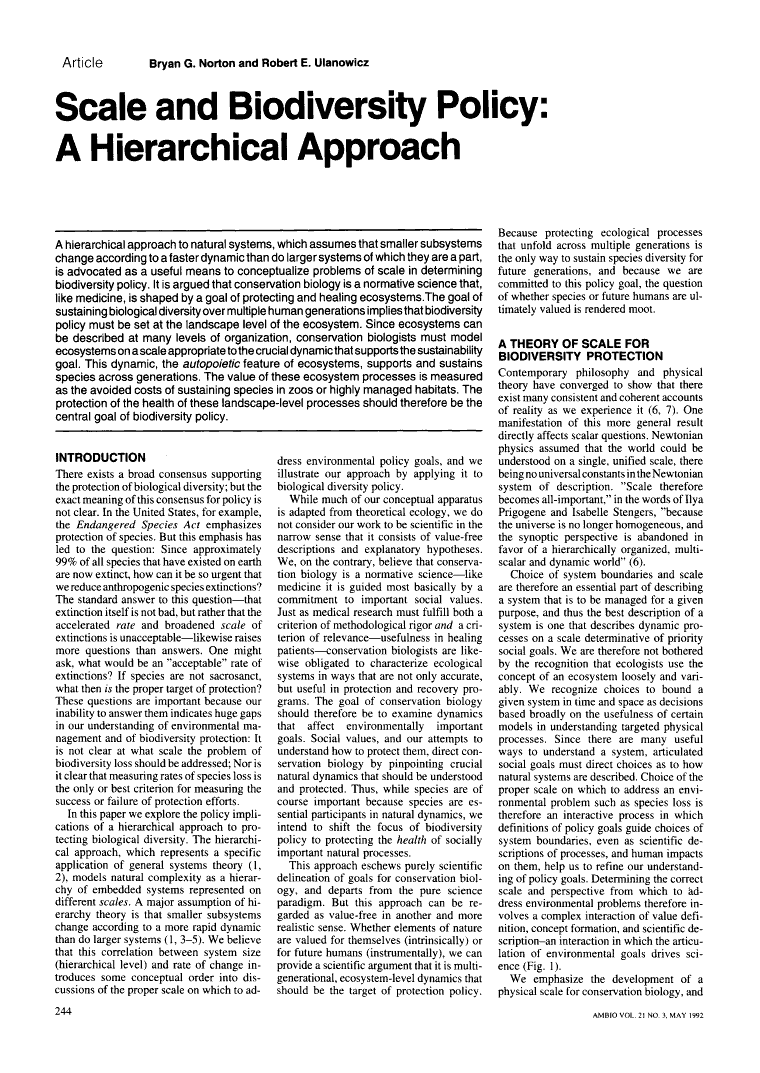
A hierarchical approach to natural systems, which assumes that smaller subsystems change according to a faster dynamic than do larger systems of which they are a part, is advocated as a useful means to conceptualize problems of scale in determining biodiversity policy. It is argued that conservation biology is a normative science that, like medicine, is shaped by a goal of protecting and healing ecosystems. The goal of sustaining biological diversity over multiple human generations implies that biodiversity policy must be set at the landscape level of the ecosystem. Since ecosystems can be described at many levels of organization, conservation biologists must model ecosystems on a scale appropriate to the crucial dynamic that supports the sustainability goal. This dynamic, the autopoietic feature of ecosystems, supports and sustains species across generations. The value of these ecosystem processes is measured as the avoided costs of sustaining species in zoos or highly managed habitats. The protection of the health of these landscape-level processes should therefore be the central goal of biodiversity policy.